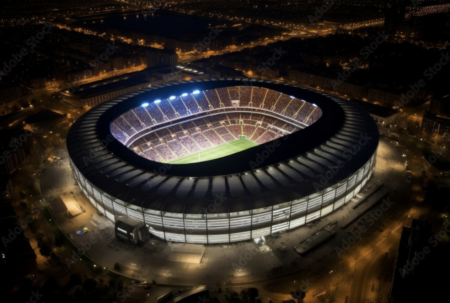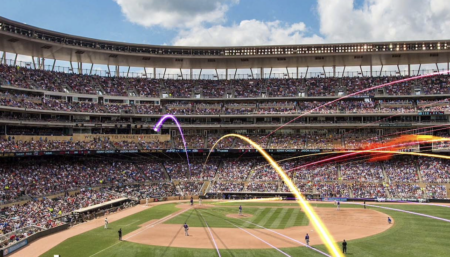The Tom Benson Hall of Fame Stadium recently reopened after an extensive renovation project, designed by HKS. Mark A Williams, principal, director of sports & entertainment business development at the architectural practice, chatted to Stadia about the project.
What were the primary design requirements for Tom Benson Stadium? What were the project’s goals and objectives?
HKS designed Tom Benson Hall of Fame Stadium with two overarching design drivers:
First, the stadium would have a strong connection and be the ultimate extension of the existing Pro Football Hall of Fame. HKS extended the unique experiential opportunities and the intimacy found with the Hall and created an environment that brings football and its heroes closer to the fans that follow them.
Second, the stadium would have all the characteristics and qualities we designed in our last four recent NFL venues, embedded within a much smaller scale and size. HKS created a seating environment and experiential opportunities that allow the patrons, talent and sponsor to interact on a very personal level.
Can you talk through some of the venue’s major features – the embedded stage, new grandstand, press and hospitality areas?
The north grandstand’s permanent stage allows for all fans to be closer to the live entertainment by reducing the distance to the front of the stage for most patrons. It also provides a permanent connection to the Pro Football Hall of Fame for year-round tours and Gold Jacket Members for their procession on Enshrinement Day. The lowering of the North Stands and stage also exposed the iconic Pro Football Hall of Fame Dome to the stadium patrons. The embedded stage transformed from a high-end VIP ticketed area during the Dallas Cowboys/ Arizona Cardinals game, to the main stage for the Pro Football Hall of Fame Enshrinement Ceremonies, to the stage for Toby Keith and Kid Rock – over a three-day period. The south grandstand features NFL-caliber design for club and suite patrons and members of the press. The proximity to the field, world-class hospitality and overall experience are all at or above NFL venue comparisons.
What does the revamped stadium now offer that it didn’t in the past?
The new stadium, in many ways, will be the heart and soul of Johnson Controls Hall of Fame Village. Its purposeful and strong connectivity to the Pro Football Hall of Fame, Hall of Fame Hotel, The Center for Excellence, The Center for Performance and the National Football Youth Sports Complex is a significant new impact.
In terms of new amenities, the stadium now offers world-class hospitality experiences. Providing a grand view overlooking Johnson Controls Hall of Fame Village, there is now over 7,000ft2 of club, lounge and terrace space that did not exist previously. The main and upper concourse concessions are comprised of superior food service amenities.
How did you ensure that the multipurpose design would feel part of the community? Are there features specifically tailored to the stadium’s use for regional universities and high schools, so that Tom Benson offers that NFL-level capability to the largest possible user base?
The stadium is designed to perform at various scales and for a multitude of event types. From high school through collegiate and professional, the venue will allow for many configurations and events and deepen the connection between the Pro Football Hall of Fame and the extended community.
The design of the stadium reflects this in various ways, including the ability to divide the existing two locker rooms in half to create two 50-person locker rooms with restrooms/showers, training rooms and equipment rooms for each. The smaller stadium also allows for an intimate experience unlike any other NFL stadium. Fans will experience a more accessible interaction with players.




